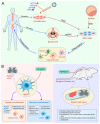Stem Cells Therapy for Spinal Cord Injury
- PMID: 29601528
- PMCID: PMC5979319
- DOI: 10.3390/ijms19041039
Stem Cells Therapy for Spinal Cord Injury
Abstract
Spinal cord injury (SCI), a serious public health issue, most likely occurs in previously healthy young adults. Current therapeutic strategies for SCI includes surgical decompression and pharmacotherapy, however, there is still no gold standard for the treatment of this devastating condition. Inefficiency and adverse effects of standard therapy indicate that novel therapeutic strategies are required. Because of their neuroregenerative and neuroprotective properties, stem cells are a promising tool for the treatment of SCI. Herein, we summarize and discuss the promising therapeutic potential of human embryonic stem cells (hESC), induced pluripotent stem cells (iPSC) and ependymal stem/progenitor cells (epSPC) for SCI.
Keywords: embryonic stem cells; ependymal stem/progenitor cells; induced pluripotent stem cells; spinal cord injury; stem cells.
Conflict of interest statement
The authors declare no conflict of interest.
Figures

References
-
- International Perspectives on Spinal Cord Injury. [(accessed on 15 January 2018)]; Available online: http://apps.who.int/iris/bitstream/10665/94190/1/9789241564663_eng.pdf.
-
- [(accessed on 15 January 2018)]; Available online: http://asia-spinalinjury.org.
Publication types
MeSH terms
LinkOut - more resources
Full Text Sources
Other Literature Sources
Medical

